Девиантность, преступность, социальный контроль в обществе постмодерна - [86]
Criminal business arises, exists and develops under certain conditions:
• demand for illegal goods (drugs, arms, etc.) and services (sexual, etc.);
• unsatisfied demand for legal goods and services (for example, total «deficit» in USSR);
• unemployment and others sources of social exclusion as social base of deviance, including criminality (Finer & Nellis, 1998; Kanfler, 1965; Lenoir, 1974; Paugam, 1996; Young, 1999);
• defective of tax-policy, customs policy of state, etc.
A criminal organization (syndicate) building up a system of organized crime (industry) is defined by the following key characteristics:
• a stable association of people, designed for long-term activity;
• criminal nature of the activity (financial pursuits dependent on criminal activity);
• deriving maximum profits as the key goal of the activity;
• complex hierarchical structure of the organization with its functions delimitated;
• the corruption of political bodies and law-enforcement bodies as the main means of the criminal activity;
• aspiration to monopolizing a certain type of trade or on a certain territory. The high degree of adaptability of criminal associations (resulting from their strict labor discipline, their careful selection of staff, the high profits, etc.) ensures their great vital capacity («the Mafia is immortal!»). For example, Russian criminal organizations recruit only the youngest, bravest and the most enterprising people.
We can see the trend of the official data about organized crime in Russia (Table 3).
Table 3. Date for crime of criminal organization (2003-2009) (http://www.mvd.ru/stats/)
We can see such main trends: the increase of some factors of organized crime before 2008 and the reduction in 2008, 2009, which has continued also in 2010.
Certainly, we can not completely rely on the official statistics. However, the changes observed in these indicators in Russia as well as in other countries may be indicative of a quantitative reduction of all parameters of criminality during a period of economic and financial crisis. This requires the special studies. But greatly qualitative features of organized crime have also changed greatly.
The following short summary of the history of Russian organized crime can help to understand the contemporary situation (Gilinskiy, 1997; Gilinskiy, 1998; Gilinskiy, 2002; Gilinskiy, 2006, Gilinskiy & Kostjukovsky, 2004). There are several periods of Russian organized crime.
1. Late 1970-s – early 1980-s
Firstly, late 1970s – early 1980s. It is the period when organized criminality in USSR began. This was mostly small illegal business with legal «co-operative societies», as well as big illegal business under the protection and with the participation of the leader communist party and state authorities, illegal exchange of currency and speculation («farcovka»). Scandals involving the illegal manufacturing and sale of cotton, fruit, caviar and fish in the 1970s and 1980s revealed for the first time the close alliances that «tenevics» (shady dealers) and other «traditional» criminals had with executive staff and official leaders of the Soviet Republics (the first secretaries of the Central Committees of the Communist Party in Uzbekistan, Azerbaijan, Moldova, Georgia, Kazakhstan were all at some point involved in scandals), the central bodies of Communist Party, as well as government and law enforcement bodies.
2. Late 1980s – mid 1990s
Secondly late 80s until mid 90s was a period of the formation and shaping of the «persisting» organized crime. For instance, in 1990s in St. Petersburg there were four criminal communities of the mafia type (so-called Tambov's, Azerbaijan's, Chechen's, and Kazan's), some dozens of criminal associations (for example, Komarov's), and hundreds of criminal groups.
These were larger criminal organizations, concerning with racket, drug trafficking, the «protection» (racket) of small and middle-sized business, market trade, sex-business, theft and selling of cars, smuggling of non-ferrous metals across the border (through Estonia), control over gambling, production of and trafficking counterfeit hard liquor. Couterfeiting strong alcoholic drinks is a traditional criminal business. In 1990s it become possible to join with the legal strong drinks production. International brands such as vodka «Absolut», «French» cognac «Napoleon», «Italian» liquor «Ama-retto», and other appeared in commercial centres in large amounts. They were produced… in the city and in the area around it. The result of the international cooperation of criminals was that greater amounts of become that greater amount of adulterated strong drinks was produced, but afterwards counterfeited strong drinks were produced. But afterwards the authentic goods (atn corresponding prices) were on sale in Russia. These were imported from Poland, Hungary, Holland, and Germany.
The Center of Deviantology (Sociology of Deviance) of the Sociological Institute of the Russian Academy of Sciences has been involved in a criminological study into the black market, economy and organized crime since 1993. Business in St. Petersburg and other regions of Russia was divided among the criminal communities. Highly organized informational services enable them to track and monitor all the commercial structures, and the moment when a new commercial structure begins making a profit, it arouses the interest of criminal groups. As one businessman interviewed asserted: «100 % of commercial structures are embraced by racket… Racketeering penetrates all the enterprises except those of military-industrial complexes and some foreign firms». One officer of FSB (Federal Service Security) told me: «Criminal associations control about 90 % business».
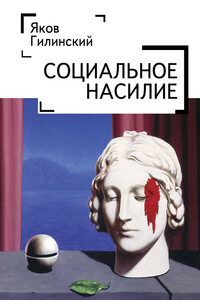
Войны и насильственная преступность сопровождают человечество всю его историю и давно служат предметом изучения историков, политологов, юристов, социологов. А вот «воспитательное насилие», экономическое насилие, насилие в спорте, религиозное насилие, насилие государства против своих граждан стали объектом специального исследования лишь в ХХ веке. В предлагаемой монографии автор высказывает свою точку зрения на социальную природу насилия и его различных проявлений.Книга может представить интерес для философов, политологов, социологов, юристов и всех, интересующихся проблемой насилия в обществе.
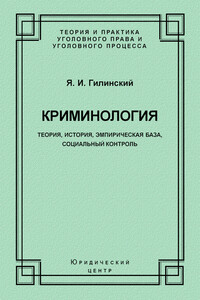
Предлагаемая вашему вниманию книга – второе, переработанное и дополненное издание монографии известного ученого-криминолога, которое может служить учебником криминологии для студентов и аспирантов. Первое издание вышло в 2002 г. и давно стало «библиографической редкостью». Автор излагает кроме общепринятых свои собственные представления о науке криминологии, преступности, ее видах, а также о реакции общества и государства на преступность. Может быть рекомендована студентам, аспирантам, преподавателям криминологии, а также всем, кто интересуется проблемой «преступления и наказания». 2-е издание, переработанное и дополненное.

Книга является первым в России историческим очерком трансперсонального проекта в российской культуре. Авторы книги, доктор психологических наук, профессор Владимир Козлов и кандидат философских наук Владимир Майков, проанализировали эволюцию трансперсональной идеи в контексте истории психологии, философии, антропологии и духовных традиций.Во втором томе исследуется русская трансперсональная традиция и выявляются общие характерные особенности трансперсональной парадигмы в России и трансперсонального мировоззрения нашего народа и великих российских мыслителей.
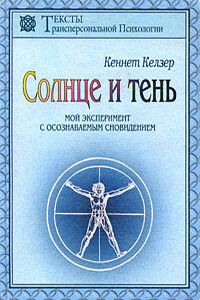
Осознаваемое сновидение есть сновидение, в котором спящий во время сна осознает, что видит сон. В таком сновидении спящий, достигая полной ясности сознания, с абсолютной уверенностью понимает, что все зримое и ощущаемое — сон, и эта необычная убежденность дает такой уровень свободы и личной силы, который недостижим в обычном сне. Эта книга уже является классическим произведением в области изучения сновидений и, наверное, еще долго будет оставаться одним из главных руководств для тех, кто следует по пути самопознания.
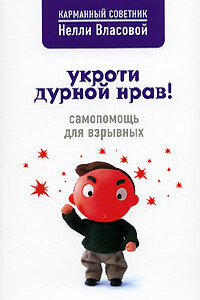
Жизнь – это наша марафонская дистанция. Если терять силы на стрессах и неприятностях, то едва ли мы доживем до достойного финиша. Успешный человек отличается от неуспешного не тем, что не падает, а тем, что умеет подниматься. Мудрый от обывателя отличается не тем, что не реагирует на стрессы и неприятности, а тем, что эта реакция скорее философская, чем злобная или страдальческая. Страхи, трудные люди, обиды, неуверенность, потери были и будут всегда. Вопрос только в том, управляют они нами или мы учимся управлять ими.Эта книга о том, как приобрести эти бесценные навыки.

В книге рассказывается история главного героя, который сталкивается с различными проблемами и препятствиями на протяжении всего своего путешествия. По пути он встречает множество второстепенных персонажей, которые играют важные роли в истории. Благодаря опыту главного героя книга исследует такие темы, как любовь, потеря, надежда и стойкость. По мере того, как главный герой преодолевает свои трудности, он усваивает ценные уроки жизни и растет как личность.
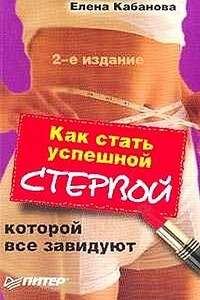
Название этой книги говорит само за себя — «Как стать успешной стервой, которой все завидуют». Замечали ли вы, что «серую мышку» никто никогда стервой не назовет? А если женщина, наоборот, активно борется за «место под солнцем» и за свой «кусочек счастья» — пожалуйста, готов ярлык: стерва. Может быть, это слово имеет позитивный смысл?Автор полагает, что это безусловно так. Ведь основные черты характера стервы — самостоятельность, прагматичность, высокая адаптивность и беспощадность к себе. Стерва принимает важные решения сама, не перекладывая ответственность на чужие плечи.

Тебе не позволяли хотеть самому? Ты все время жил чужой волей, и поэтому ты сейчас уже не хочешь ничего? Ты разучился хотеть? Боишься выбирать и тебе уже проще жить, как все, и тихо все это ненавидеть?.. Но есть другое предложение: начинать жить снова, потому что сегодня – это не жизнь, а жить все равно хочется, и жизнь стоит того, чтобы ее прожить полной грудью, со всей скоростью! Начинается такая жизнь непросто. Она начинается с детства, а детство – с игры в «Хочу» и «Не хочу». И протестов против того, что «Надо».Эта книга о том, как научиться видеть завтра и сделать свою жизнь радостной!